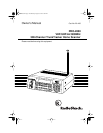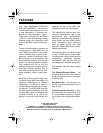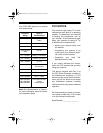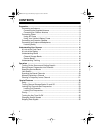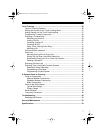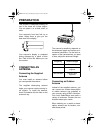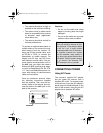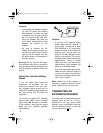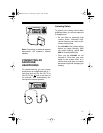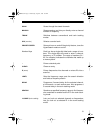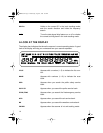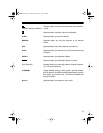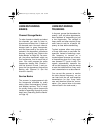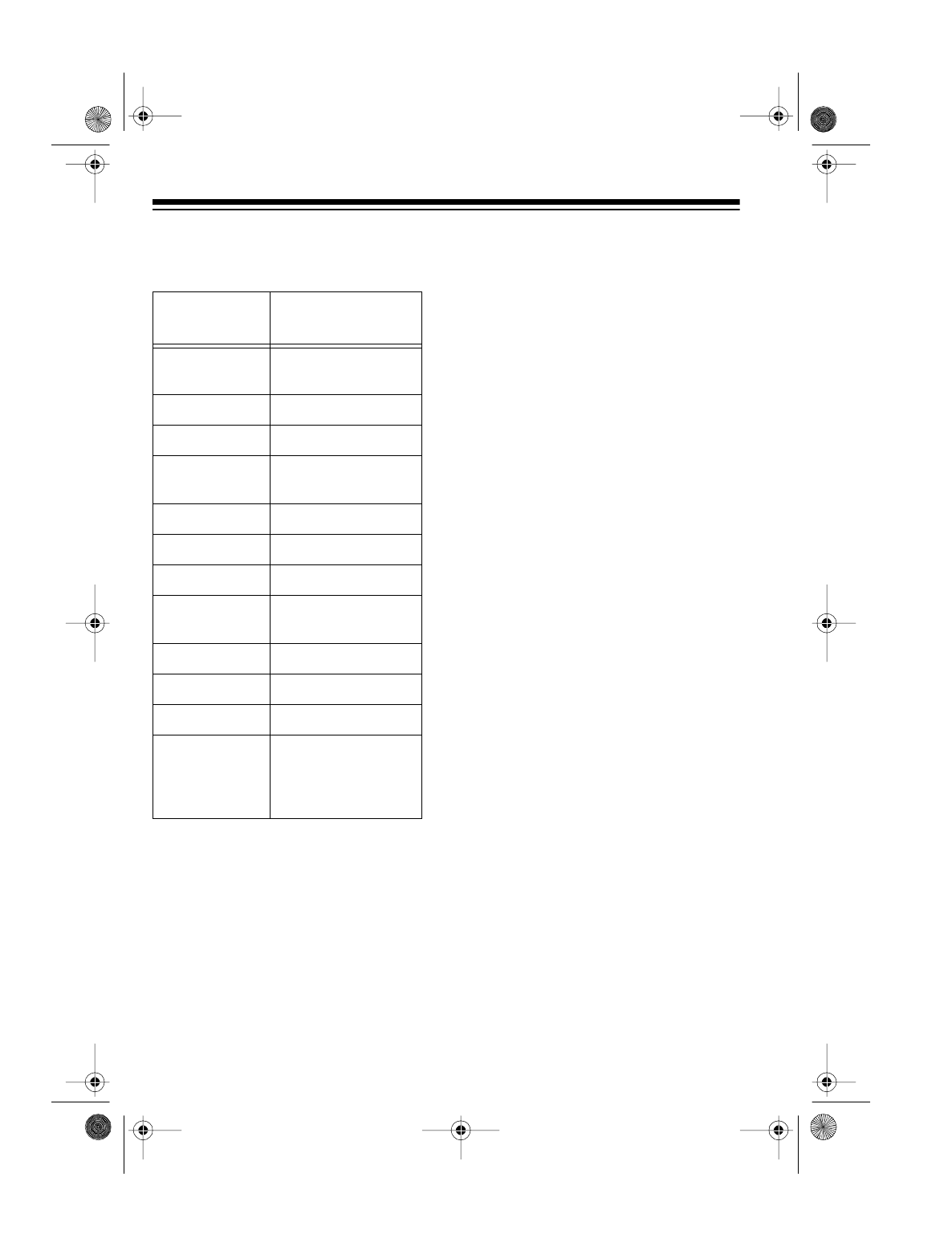
4
Your PRO-2050 scanner can receive
all of these bands:
Note: See “Specifications” on Page 51
for more information about the scan-
ner’s frequency steps.
FCC NOTICE
Your scanner might cause TV or radio
interference even when it is operating
properly. To determine if your scanner
is causing the interference, turn off
your scanner. If the interference goes
away, your scanner is causing it. Try
to eliminate the interference by:
• Moving your scanner away from
the receiver
• Connecting your scanner to an
outlet that is on a different electri-
cal circuit from the receiver
• Contacting your local Ra-
dioShack store for help
If you cannot eliminate the interfer-
ence, the FCC requires that you stop
using your scanner.
This device complies with Part 15 of
the
FCC Rules
. Operation is subject to
the following two conditions: (1) This
device may not cause harmful interfer-
ence, and (2) this device must accept
any interference received, including
interference that may cause undesired
operation.
We recommend you record your scan-
ner’s serial number here. The number
is on the scanner’s back panel.
Serial Number _________________
Frequency
Range
Types of
Transmissions
29–29.7 MHz 10-Meter Amateur
Radio
29.7–50 MHz VHF Lo
50–54 MHz 6-Meter Ham Band
108–136.975
MHz
Aircraft
137–144 MHz Military Land Mobile
144–148 MHz 2-Meter Ham Band
148–174 MHz VHF Hi
406–420 MHz Federal
Government
420–450 MHz 70-cm Ham Band
450–470 MHz UHF Standard Band
470–512 MHz UHF “T” Band
806–824 MHz
851–869 MHz
896–956 MHz
Public Service “800”
except
Cellular Band
20-430.fm Page 4 Wednesday, August 4, 1999 1:29 PM



